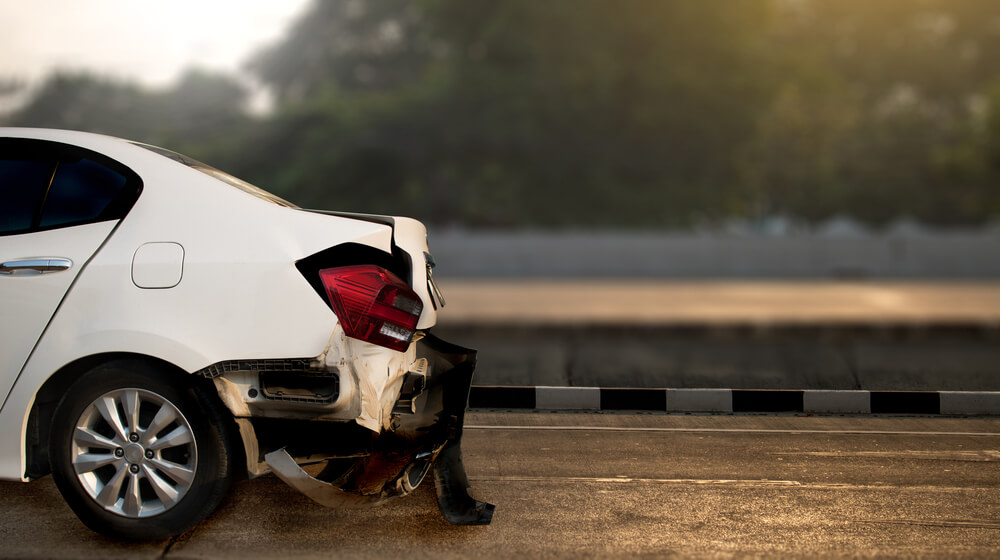Hit-and-run accidents are among the most devastating accidents that happen on Texas roads. Any collision can cause significant damage and injury, but in most cases, drivers are happy to stick around, answer questions, and exchange insurance information so that all parties can get fairly compensated and move on.
But where do you stand when your accident is caused by a driver who flees the scene? We look at hit-and-run accidents in Texas and what you can do.
Areas in Greater San Antonio We Serve
How Many Hit-and-Run Accidents Happen?
Hit-and-run accidents are shockingly common. According to the most recent data from the American Automobile Association (AAA — commonly known as Triple A) Foundation for Traffic Safety, an estimated 737,100 hit-and-run accidents happened in 2015 — or every 43 seconds.
Just 5.1% of those accidents resulted in fatalities (1,819), but what’s notable is that the percentage of hit-and-run accidents causing death has steadily increased year on year since this data was recorded.
Other Triple A data revealed that Texas has the eighth-highest number of hit-and-run fatalities in the US. Arguably, this isn’t surprising — Texas roads have long been regarded as the most dangerous in the country, with speed limits on some highways as high as 80 mph.
What Does the Law Say about Hit-and-Run Accidents in Texas?
Chapter 550 of the Texas Transportation Code makes it an offense for drivers to fail to stop their vehicle after an accident.
According to the statute, any driver involved in an accident involving injury or death — or likely to cause injury or death — must:
- Immediately stop the vehicle at the scene — or as close to the scene as possible. If they fail to stop at the scene, they must return to it.
- Determine whether anybody else is involved in the accident and whether they require aid.
- Remain at the scene until they have given their name, address, vehicle registration number, and insurance provider to any individuals injured, and provide reasonable assistance to any person injured. Reasonable assistance can include transporting — or making arrangements to transport — the person to a hospital.
Finally, drivers involved must immediately report the accident to the local police department or sheriff’s office.
Why These Laws Are in Place and the Penalties for Being in a Hit-and-Run Accident
These laws prevent people from leaving the scene after a hit-and-run accident. Unfortunately, hit-and-runs still happen. A person might leave an accident scene for many reasons. Sometimes, they may be engaging in other illegal behavior — such as driving while intoxicated, without insurance, or while their license is suspended. They may even be driving a stolen vehicle and not want to get caught.
Other times, a person might flee the scene without any bad intention. They might falsely believe everything is okay and they don’t need to stay, or they may panic and keep driving. With adrenaline running, they may not act rationally — the “fight or flight” response at work. Sometimes, a driver might not even know they’re obligated to stop, especially if nobody else is hurt.
Whatever the reason, leaving an accident scene is a serious issue. Not only does it cost law enforcement resources to find the person responsible, but it also makes it more difficult for those affected by the collision to get justice and compensation.
To deter such behavior, fleeing the scene of a hit-and-run accident in Texas carries criminal penalties. These range from a Class C misdemeanor to a second-class felony charge, depending on the severity of the crash and the damage caused.
If a person is responsible for a hit-and-run accident resulting in death, it is a second-degree felony, punishable by a prison term of between two and twenty years. A person convicted on such a charge may also be given a fine of up to $10,000.
If a person is responsible for a hit-and-run accident resulting in serious bodily injury, it is a third-degree felony, punishable by a prison term of between two and ten years, plus a potential fine of up to $10,000.
If a person is involved in a hit-and-run accident not resulting in death or serious bodily injury, it is an offense punishable by imprisonment in the Texas Department of Criminal Justice for up to five years or confinement in the county jail for up to one year.
For hit-and-run accidents in Texas causing vehicle damage or striking an unattended vehicle or structure, fixture, or highway landscaping, it is a Class C misdemeanor if the damage is less than $200 or a Class B misdemeanor if the damage is $200 or more.
A Class B misdemeanor is punishable by a fine of up to $2,000 and/or confinement for up to 180 days.
A Class C misdemeanor is punishable by a fine not exceeding $500.
There is an exception for Class C misdemeanor penalties. If the defendant has previously been convicted of disorderly conduct or public intoxication three times within the 24 months preceding the date of commission of the current charge, the offense is punishable by a fine of up to $2,000 and/or a prison term of up to 180 days.
Claiming Compensation after a Hit-and-Run Accident in Texas
Criminal penalties aside, if a hit-and-run driver caused your accident, you may be entitled to recover compensation in a personal injury claim.
Like car accidents can range from fender benders to devastating multi-vehicle crashes, the injuries sustained in a collision can encompass everything from cuts, bruises, and broken bones to spinal cord injuries, traumatic brain injuries, and burns.
Your priority after being in an accident should be to speak to the police and get urgent medical attention — even if you feel fine. A medical professional may be able to diagnose “hidden” injuries that don’t cause any immediate symptoms, allowing you to start treatment earlier and begin your recovery. There’s also an additional benefit to seeking medical treatment as soon as possible after your injuries: you have a record.
This means if your injuries later get worse and you need treatment, the other party won’t be able to dispute when you initially sustained your injuries.
Many people injured in a car accident don’t seek medical treatment because they’re worried about the cost. There’s no denying that hospital or emergency room visits, medication, scans, tests, and transport all cost money. If you need additional treatment, such as surgery or physical therapy, you may be worried about how you can afford it. On top of this, you may need to take time off work while you recover.
But filing a personal injury claim allows you to recover those expenses. A personal injury lawyer, like our car accident lawyers in McAllen and San Antonio, can even help you arrange medical treatment and postpone payment until you receive compensation.
Proving Who Was Responsible for Your Hit-and-Run Accident
To claim compensation after a hit-and-run accident in Texas, there needs to be a party you can claim from. Once you’ve identified the party responsible, you need to gather evidence of their liability.
Evidence can come in many forms, from witness testimony and CCTV footage to crash reports and blood alcohol test results (if the driver was intoxicated when they caused the crash).
But one of the main obstacles in this type of accident is that the driver isn’t on the scene. There are several things you can do to support investigators in finding the person responsible:
- If it’s safe to do so after your accident, try to note down any information about the hit-and-run driver — What type of vehicle were they driving? What color was it? Did the car get hit? If so, what damage was there? Which direction did they head in? Did you get a look at their license plate?
- Were there witnesses at the scene (whether other drivers, passengers, or pedestrians) who saw the crash and may have gotten a better look at the hit-and-run driver and vehicle?
Investigators can speak to these witnesses and look at traffic cams in the surrounding areas to identify where the driver went after fleeing the scene.
This is a vital step in any accident where a driver leaves the scene — even if you don’t think they are responsible for your crash. Not only is it a crime to drive away from an accident before administering aid, if needed, and exchanging insurance provider information, but the hit-and-run driver may also play a bigger role in your accident than you realized.
For example, one car might brake into another and then drive away. But this causes a chain reaction, where the second car hits the car behind, and so on. Even though the hit-and-run driver didn’t directly hit you, they may still be responsible for the entire accident because they are the first link in that chain.
Why You Need an Attorney after a Hit-and-Run Accident
Once you’ve reported your hit-and-run accident and sought medical attention, your next step should be to hire a lawyer.
A personal injury attorney can investigate how the accident happened to determine if any other person or party may be liable. This might include another driver, a manufacturer — if there was an auto defect — or a third-party company, such as an organization whose employee was doing their job duties during the accident.
Ultimately, while it’s a prosecutorial offense not to stop at an accident scene, that doesn’t mean the hit-and-run driver is responsible — in whole or in part — for the crash and that they’re liable for compensatory damages.
Our personal injury lawyers in Texas can gather evidence, seek expert testimony from medical accidents and accident reconstructionists to support your case, and explore all avenues for recovering compensation. Then, we will negotiate with the at-fault party (or parties) to secure a settlement that fairly compensates you for your medical expenses, lost wages, and pain and suffering.
If you’re in a hit-and-run accident in San Antonio, McAllen, Uvalde, Del Rio, Converse, or Hondo, our car accident lawyers in Texas can help you get the compensation and justice you deserve. Contact us today for a free, no-obligation case review by filling in the contact form or calling 855-LAW-NINJA.

